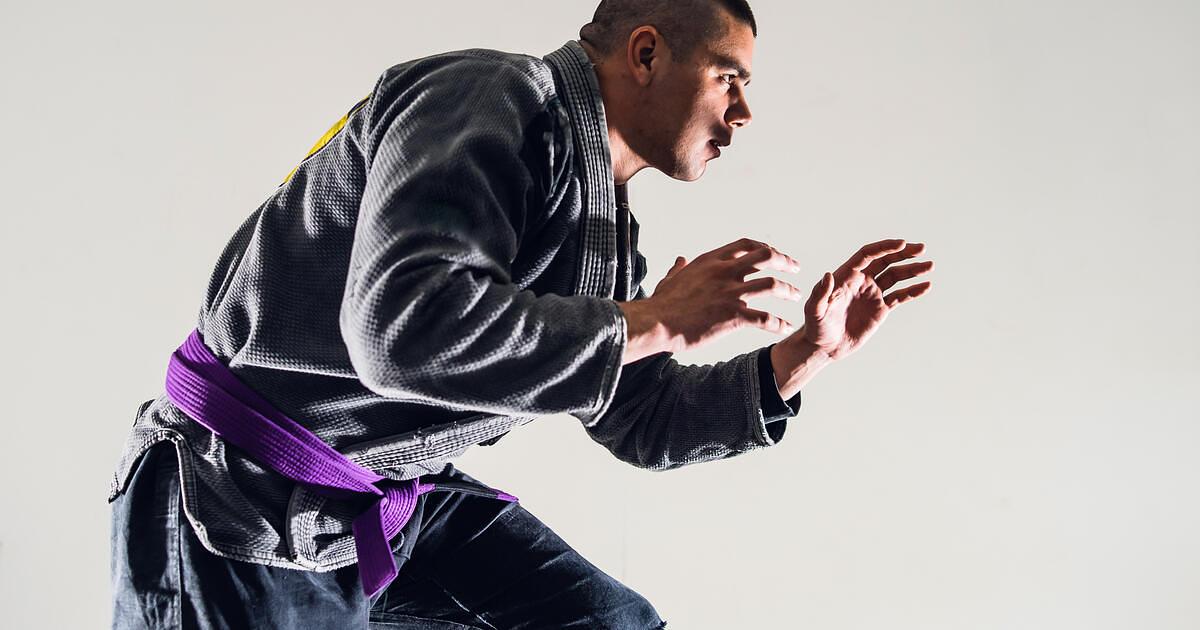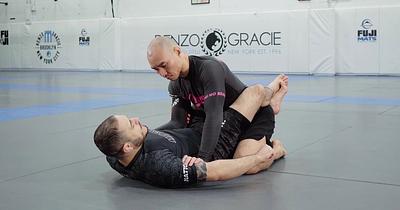BJJ Solo Drills: The Ultimate Guide for At-Home Training
by Team Digitsu
Updated: April 03, 2024

BJJ Solo Drills are an excellent way to keep the movements fresh in the mind when traveling or unable to make it to the gym. They are also a great way to warm up before training or workouts. These drills can be done on their own as sport-specific conditioning workouts. This article will cover some of the most common BJJ solo drills that can be done at home or on the go.
Shrimping / Hip Escapes
Shrimping and hip escapes are common movements in BJJ. They can be seen in many situations, mostly when playing guard, retaining guard against a passer, and escaping from bottom pins. Many shrimping drills cover the distance as you do them, so you can do them back and forth across the mats.
Stephen Kesting gives a great example of different types of shrimping to drill:
- Two Legged Shrimp
- Single Leg Shrimp
- Side Shrimp
- Forward Shrimping
- Box Shrimping
- Bridge Shrimping
- Side Control Wall Shrimp
- Shrimp and Turn Out
- Elbow Shrimp
- Hand Shrimp
Reverse Shrimping is another BJJ drill. This is often used to make space between you and your opponent:
Bridging
Bridging is also one of the most common movements in BJJ. Similar to shrimping, this is done when your back is to the mat and is primarily used to escape pins like mount and side control. It also often comes into play during guard play and guard retention. Traditionally, outside the contexts like yoga, it is considered to be bringing your hips straight up and driving with your feet. In wrestling, it can even involve bridging on your head to avoid your shoulders being pinned to the mat.
The difference in BJJ is that it's done over the shoulder, and rather than straight up, it has a direction to the bridge. Typically in BJJ, you are briding to the side over one of your shoulders to make space and cause your opponent to move in that direction. This can be combined with shrimping with "Bridge Shrimping".
Sitouts
Shrimping and Bridging drills work on movements when we're on the bottom with our back towards the mat. Sitouts focus on a movement that is most useful when we're the bottom turtle position and our opponent is in front of us with weight on the flat of our back. This could be after a failed takedown attempt or wrestling up from the bottom.
Technical Stand Ups / Seated Hip Heisting
This works on the proper way to move from a seated position to a standing position. It allows you to stand up in such a way as to protect your head/neck from submission attacks and strikes.
Rolling
Rolling drills simulate starting from a bottom turtle position with our opponent alongside or behind us and rolling to return to the guard position.
Grandby Rolling
The Grandby Roll is a more applicable technique for advanced guards and guard retentions. The easy method to perform the Grandby Roll is to sit on the floor with your legs extended. Bend your body towards your legs so that your arms can reach your legs easily. From there, roll sideways on your right shoulder while keeping your head tucked between your legs. Once you complete the roll on one side, repeat the process on the left side, keeping your legs and arms still touching each other throughout the movement. This drill can be challenging to master and requires a certain level of skill and flexibility.
Breakfalls
Breakfalls, also known as ukemi in Judo, is an essential technique in BJJ that allows practitioners to safely fall and roll without getting injured. It is necessary to learn and practice breakfalls before attempting more advanced techniques that involve throws or take-downs. You can also practice with a partner and have them gently push or pull you to simulate a fall.
Sprawls
BJJ's sprawl drill is essential to defend against takedowns and maintain a standing position. It is a powerful and dynamic movement that requires strength, flexibility, and coordination.
Penetration Steps and Takedown Shots
Penetration steps and shooting for takedowns are essential techniques in BJJ that allow practitioners to close the distance between themselves and their opponents and take them down to the ground. These drills are necessary for both offense and defense in BJJ and can be used to improve footwork, balance, and timing.
Shadow Grappling / BJJ
Shadow grappling, also known as visualization training, is a technique used by BJJ practitioners to improve their skills and performance. Much like a boxer will visualize a match and shadowbox, BJJ practitioners can do the same by combining various drills and techniques.
One way to practice shadow grappling is to start from the feet and work on footwork, sprawls, penetration steps, and takedowns. Then move to the floor and perform bridging, shrimping, and back to the feet with a technical standup. This is a great way to warm up and reinforce the movements/drills with various positions and supplement your training. You can visualize setting up your takedowns as well. This can help you get comfortable on your feet, which Mason Fowler recommends as the first step to avoid telegraphing your takedown shots.
The benefits of shadow grappling are numerous:
- It allows practitioners to visualize and practice techniques and movements in a safe environment without injury.
- It helps improve muscle memory, coordination, and reaction time.
- It can be done anywhere, anytime, making it an easy way to supplement your training.
- It can help identify and correct weaknesses or mistakes in your technique.
- It can also help with visualization and mental preparation for competition and training.
Using Solo BJJ Drills as a Standalone Workout
You can combine the different solo drills into a workout. These can be done at a light intensity as a warmup or at higher intensities to increase the heart rate. You can complete a sport-specific aerobic workout using the drills by accumulating 30 minutes of work and keeping an average heart rate of 120-150 BPM.
You can vary the rest/work period to vary intensity depending on your goals. A basic workout could be 30 seconds of work, 30 seconds of rest between each exercise and round, and up to as many rounds as you see fit. You can turn the intensity up or down by adjusting the work/rest ratio. For example, 45 seconds of work and 15 seconds of rest for increased tempo or 20 seconds of work and 40 seconds of rest for a more replaced pace.
Below are some sample workouts, but they can be combined in any way that makes sense.
Sample workout 1 (Feet/Wrestling):
- Shadow Grappling with Sprawls
- Shadow Grappling with Shots/Penetration Steps
- Breakfalls to Technical Standup
Sample Workout 2 (Shrimping / Bridging):
- Shrimp (Any variation)
- Bridge Shrimping
- Reverse Shrimping
Sample Workout 3 (Bridging / Rolling):
- Rolling from Supine Position
- Bridging side to side
- Grandby Roll
- Sitouts
Conclusion
BJJ Solo Drills are a valuable tool for any BJJ practitioner, allowing them to keep their movements fresh in mind when traveling or unable to make it to the gym. These drills are also a great way to warm up before training or workouts and can be done on their own as sport-specific conditioning workouts. These drills are essential for both offense and defense in BJJ and can help improve footwork, balance, coordination, reaction time, and muscle memory.


